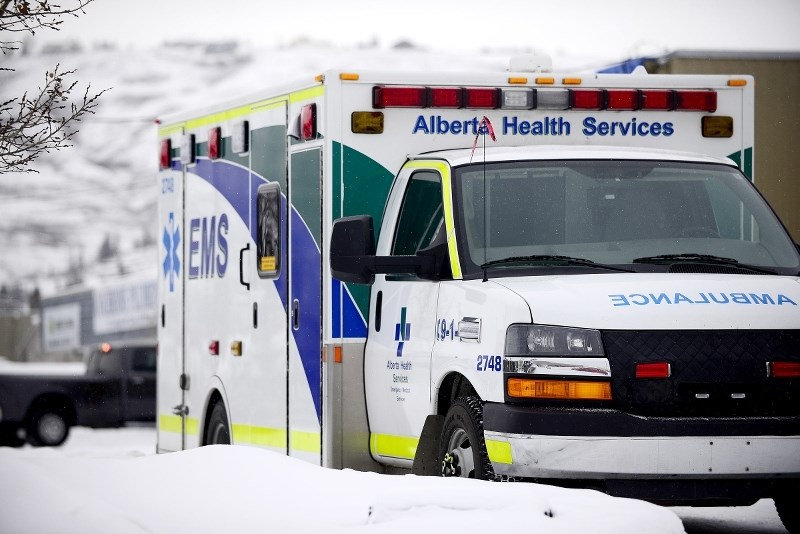Some paramedics are concerned that increased pressures on Calgary ambulances could put those in need of emergency services in rural communities at risk.
Some paramedics are concerned that increased pressures on Calgary ambulances could put those in need of emergency services in rural communities at risk.
According to Nick Thain, executive director of south sector of EMS operations for Alberta Health Services (AHS), “January was a higher call month for us across the entire Calgary zone ” adding that the last six to eight weeks has seen a spike in ambulances dispatched.
Thain confirmed that AHS staffs and mans two ambulances in Cochrane that operate 24 hours per day, seven days per week.
“In Cochrane, the average response time sits well under 10 minutes, ” said Thain, confirming this time frame is within AHS’ acceptable parameters.
Paramedics interviewed by the Eagle said that these ambulances have the potential to be taken out of the community and put rural services at risk - as ambulances are dispatched back into Calgary to provide service.
Thain said that “greater than 98 per cent of all ambulance events inside the City of Calgary are responded to by resources in Calgary. ”
The Eagle interviewed two paramedics who have lived and worked in the Calgary-Cochrane region for a number of years.
As both expressed concerns over job security, the Eagle has granted full anonymity to both individuals.
“It’s not a functional system, ” said the first paramedic, emphasizing that the root cause is threefold: system abuse where people call ambulances when they don’t need to because they think it will get them admitted into hospital care quicker; that
hospitals are backlogged; and there are not enough resources - AHS is not hiring enough paramedics and is overworking the ones currently employed.
Thain said, “Regardless of what the individual deems to be an emergency, we have a legal duty to respond ” - something that the first paramedic said needs to be countered with increased public awareness to avoid people calling ambulances “for a toothache. ”
Thain did confirm that dispatching an ambulance will not necessarily result in faster hospital admittance, as all patients are treated in order of acuity. Paramedics cannot leave until their patients are given over to hospital care.
The second paramedic also expressed concern over how a “constantly busy ” system will impact rural communities - citing an example of an elderly woman who recently waited for roughly 20 minutes with a broken leg for an ambulance to respond. The paramedic also commended fire services for providing EMS support as needed and adding that it is “unfortunate ” that Cochrane does not have an advanced life support capable medical response agreement with its fire department like Canmore does. Cochrane fire trucks are presently only equipped with basic life support services.
According to Cochrane Fire Service Chief David Humphrey, “Cochrane Fire Services provides medical co-response as per our agreement with AHS. All our fire staff are certified within the provincial first medical response program. ”
The second paramedic stressed that the Calgary zone does not have “surge capacity ” - meaning in the event of a catastrophe - such as a plane or bus crash -there is concern as to how a large number of people would be attended to and transported via ambulance within an acceptable time frame.
Thain said with respect to Cochrane, response times are being met - though there was a slight increase in response times during the summer.
According to the AHS’s website data on Cochrane, roughly half of all ambulances calls are defined as emergency calls. The other half is comprised of non-emergency and transfer calls.
Both disagreed with Thain’s comments that there are always ambulances available.
“Define what an available ambulance is? ” asked the first paramedic, stressing that the shuffling around of ambulances is just a “Band-Aid solution ” that does not address the issue of needing more ambulances (Thain said more were added last month), more staff and addressing the backlog situation at hospitals.
The second paramedic said staffing is an issue, in that AHS is “trying to cut paramedics ” resulting in existing practitioners being overworked. He said this translates to a greater need for mental health supports for active practitioners.
Thain said, “As a leadership team, we couldn’t be more proud of our paramedics. ”
